3 Pillars Trading: Open Interest and How Funding Rates Work
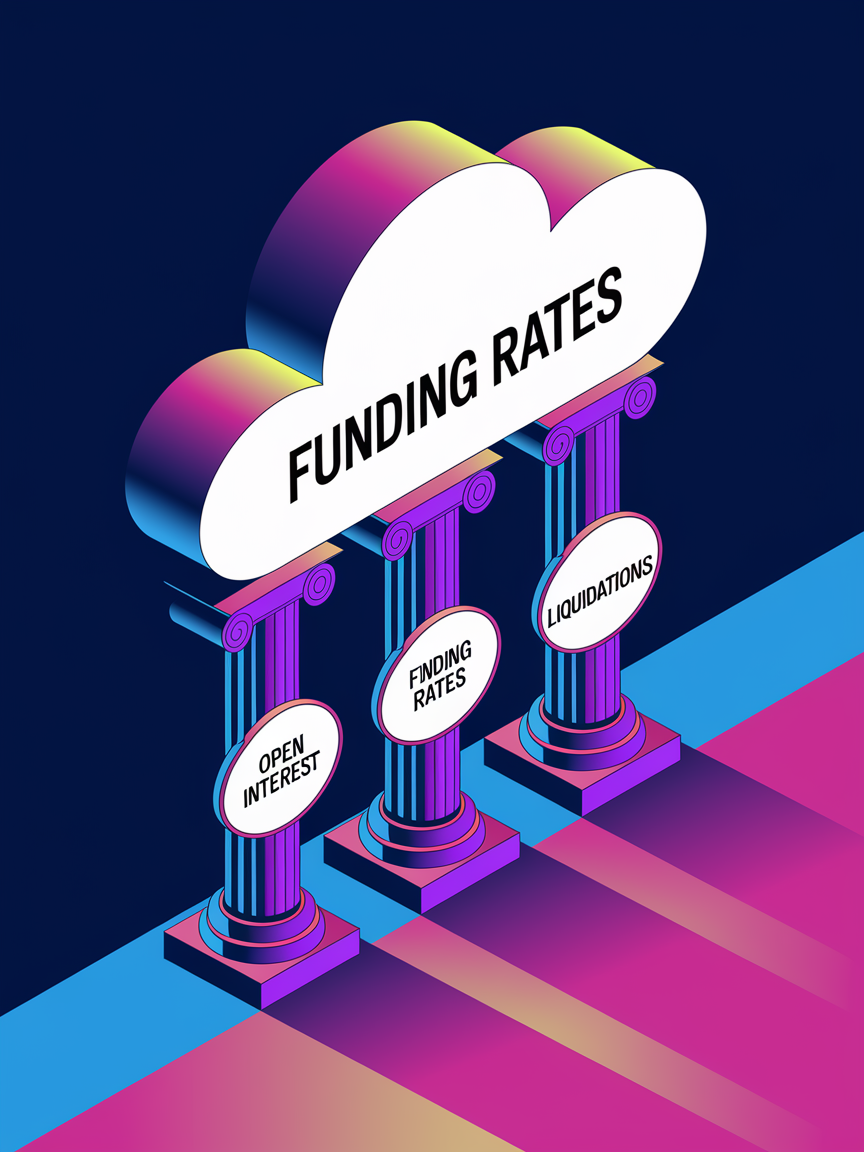
3 Pillars Trading: Open Interest and How Funding Rates Work
Funding rates in perpetual futures trading help keep the contract price close to the underlying spot price. Since perpetual contracts don’t have an expiry date like traditional futures, funding rates act as a mechanism to balance long and short positions.
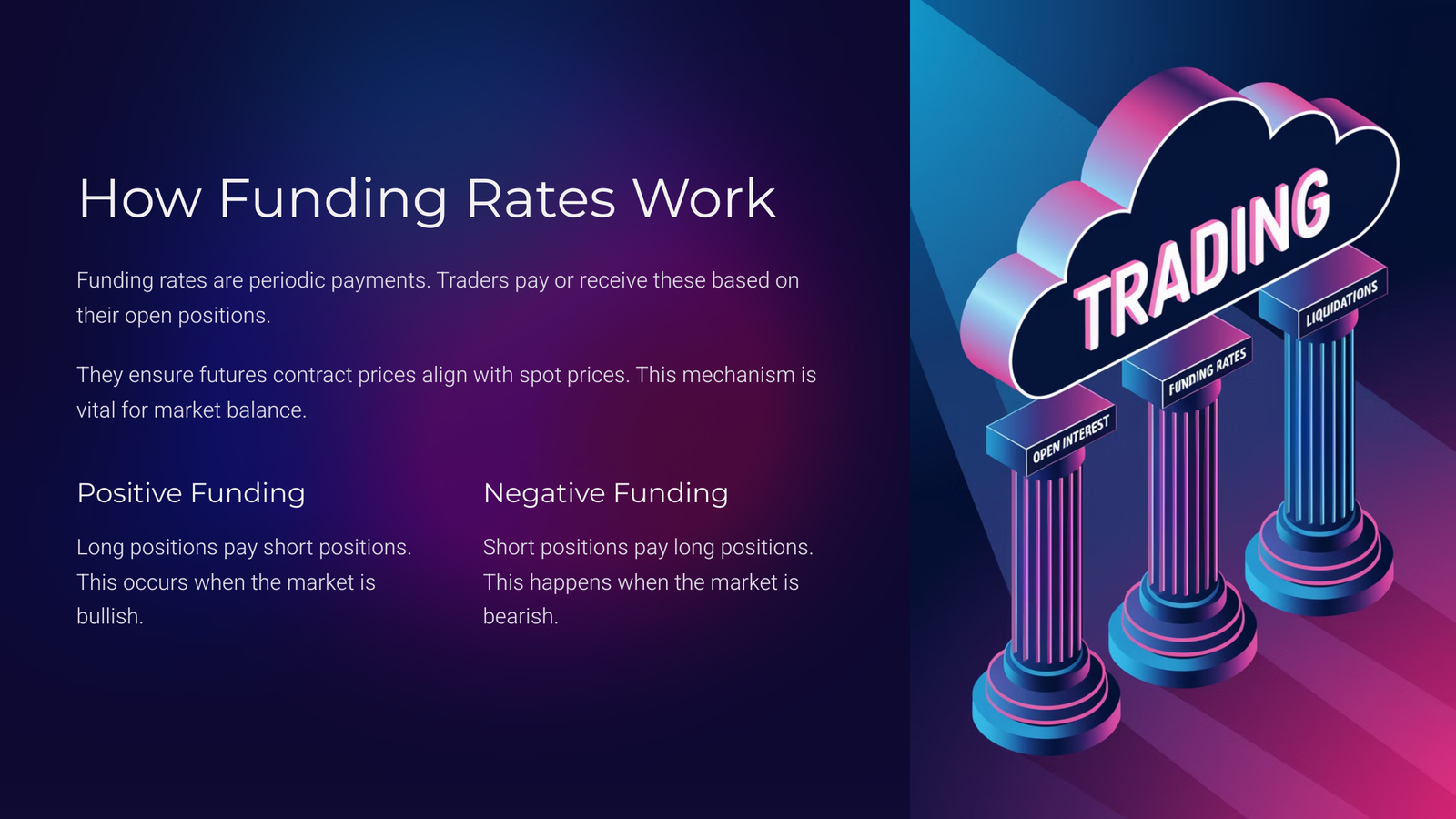
How Funding Rates Work:
1. Periodic Payments Between Traders:
• If the funding rate is positive, long traders (buyers) pay short traders (sellers).
• If the funding rate is negative, short traders pay long traders.
2. Determined by Market Conditions:
• Funding rates are calculated based on the difference between the perpetual contract price and the spot price.
• If the perpetual price trades above the spot price, funding is positive (favouring shorts).
• If the perpetual price trades below the spot price, funding is negative (favouring longs).
3. Tied to Open Interest:
• Open interest represents the total number of open contracts.
• When funding rates are high, it suggests many traders are positioned in one direction (e.g., many longs in a bull market).
• A sudden drop in open interest could indicate liquidation events or traders closing positions due to high funding fees.
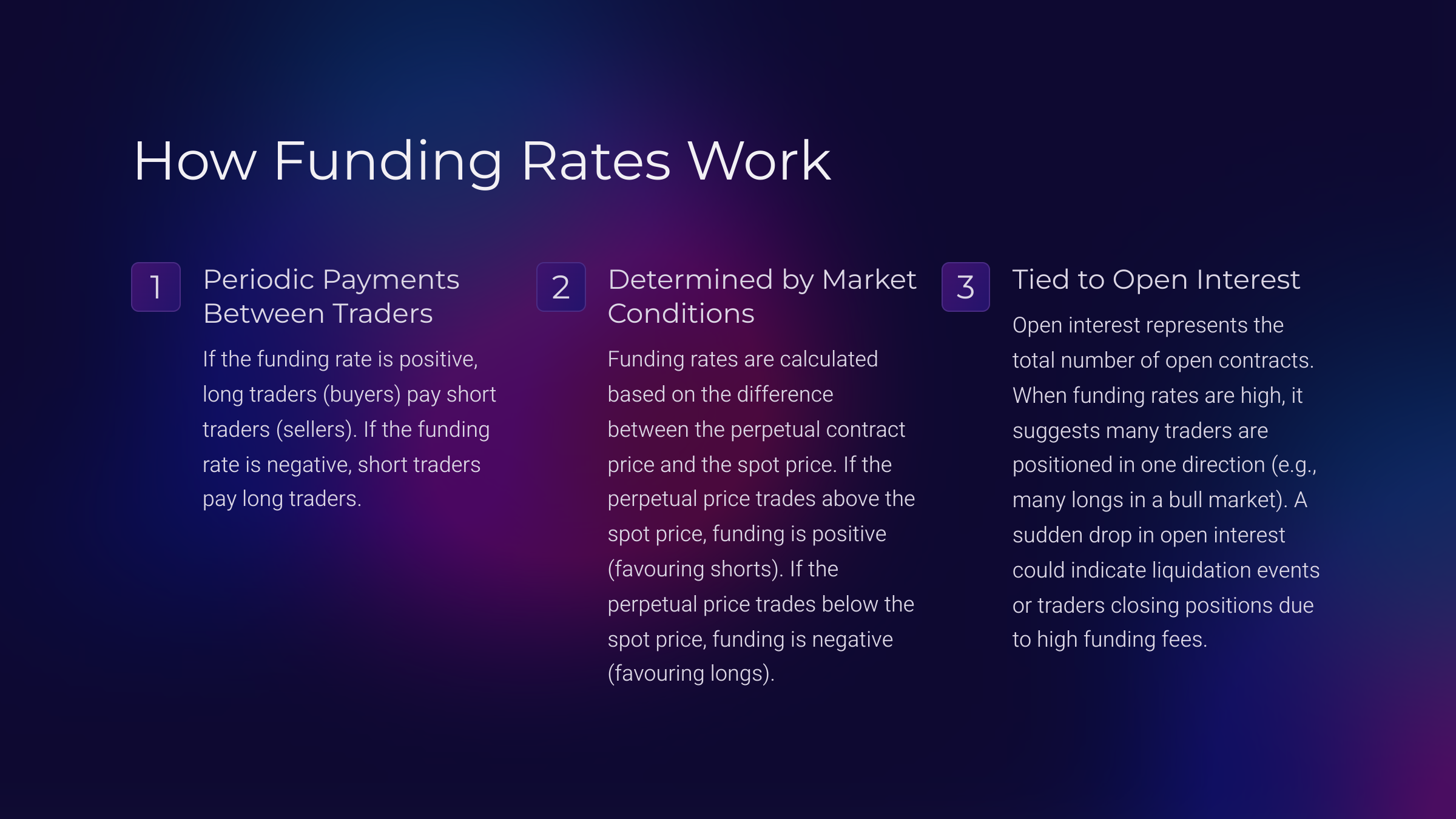
Why It Matters in Trading:
• Trend Confirmation: If funding rates and open interest are rising together, it indicates strong conviction in the trend.
• Reversals & Liquidations: Extremely high funding rates might mean an overheated market, increasing the chance of a reversal or long liquidation cascades.
• Cost Considerations: If you hold a position for a long time, funding fees can eat into your profits, so it’s crucial to factor them into your strategy.
Example of How Funding Rates and Open Interest Affect Trading
Let’s say Bitcoin is trading at $50,000 on the spot market, but on a perpetual futures exchange, the contract price is $50,500. This indicates that the demand for long positions is high, pushing the perpetual contract price above the spot price.
Scenario 1: Positive Funding Rate (Bullish Sentiment)
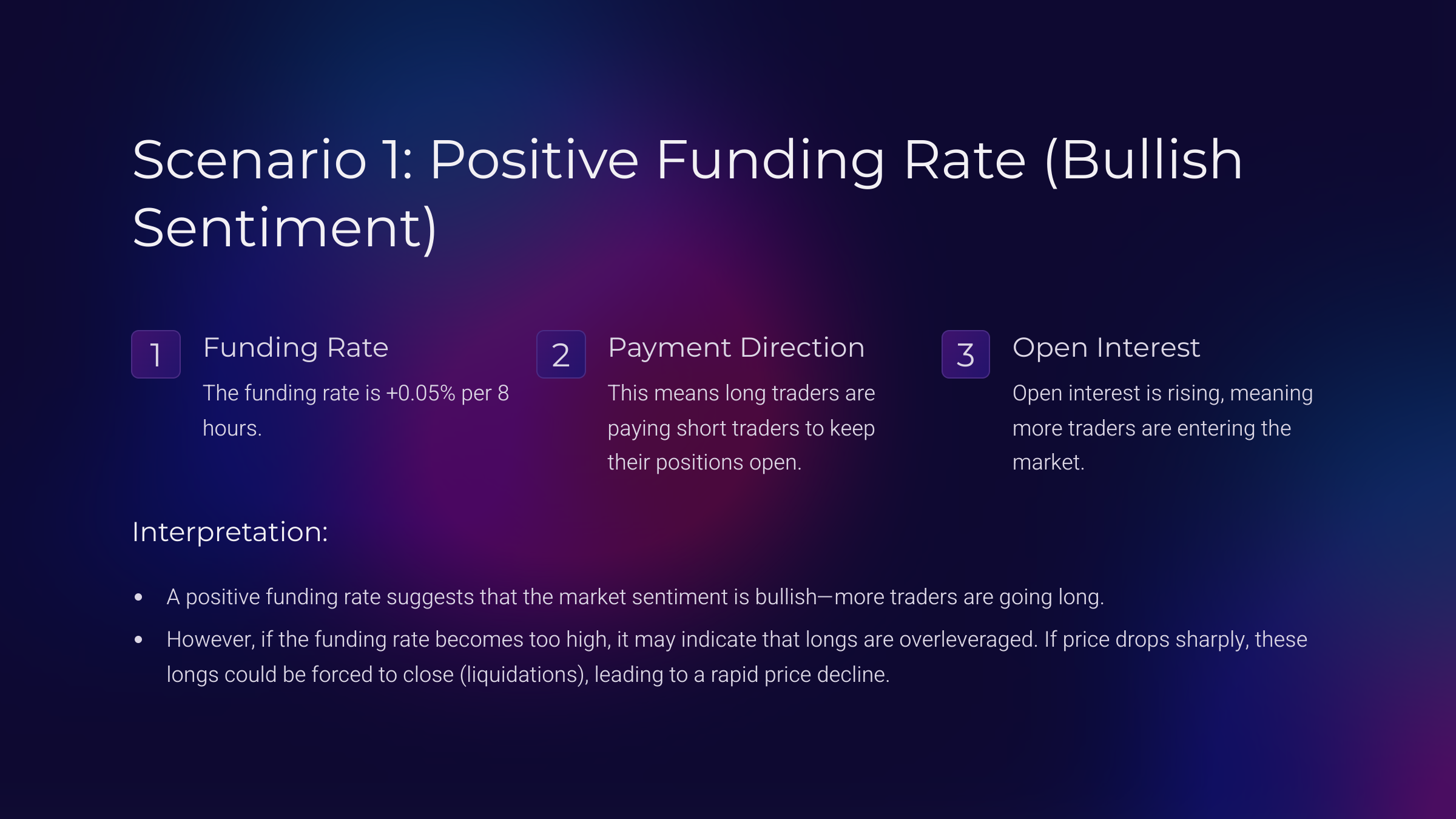
• The funding rate is +0.05% per 8 hours.
• This means long traders are paying short traders to keep their positions open.
• Open interest is rising, meaning more traders are entering the market.
Interpretation:
• A positive funding rate suggests that the market sentiment is bullish—more traders are going long.
• However, if the funding rate becomes too high, it may indicate that longs are overleveraged. If price drops sharply, these longs could be forced to close (liquidations), leading to a rapid price decline.
Scenario 2: Negative Funding Rate (Bearish Sentiment)
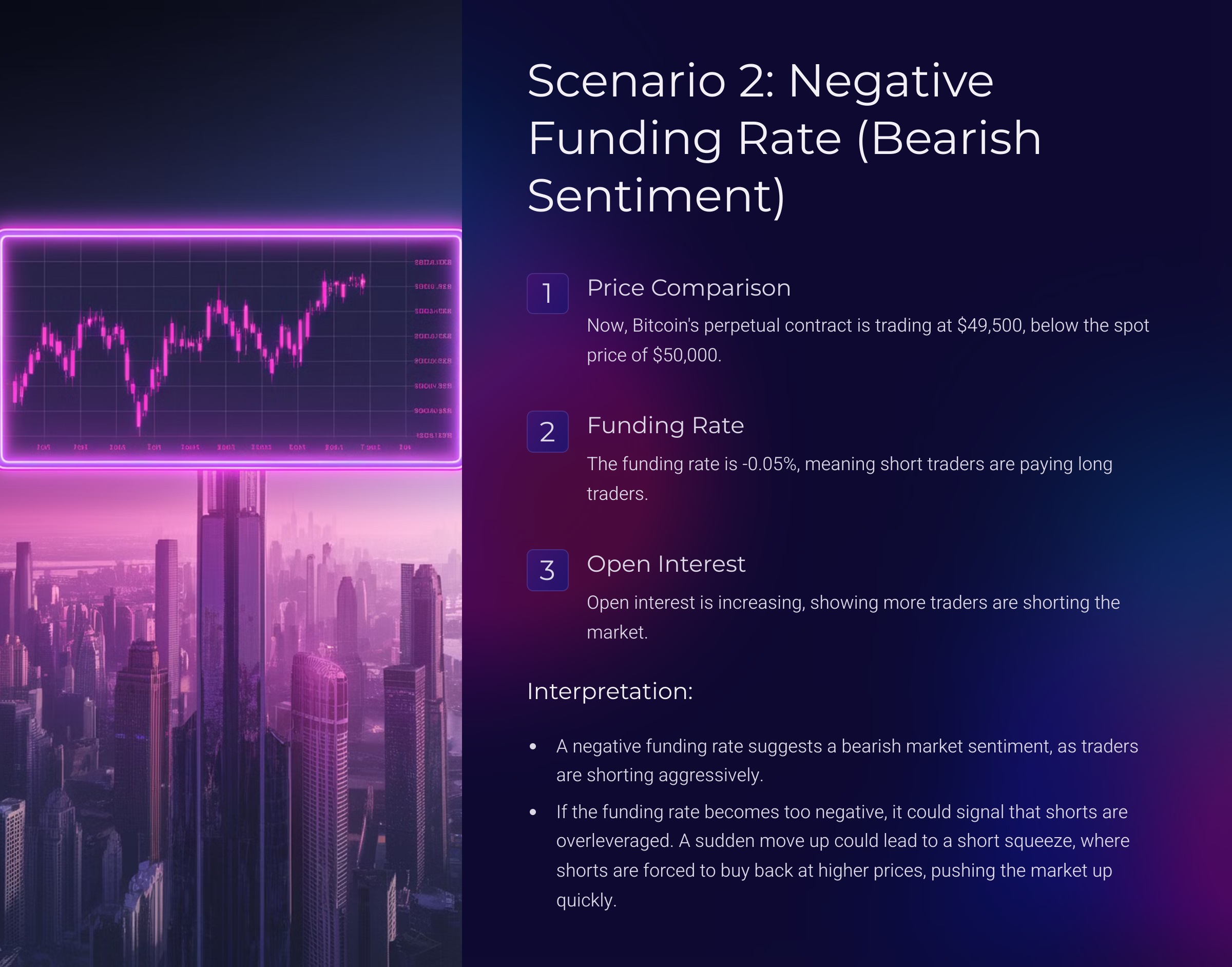
• Now, Bitcoin’s perpetual contract is trading at $49,500, below the spot price of $50,000.
• The funding rate is -0.05%, meaning short traders are paying long traders.
• Open interest is increasing, showing more traders are shorting the market.
Interpretation:
• A negative funding rate suggests a bearish market sentiment, as traders are shorting aggressively.
• If the funding rate becomes too negative, it could signal that shorts are overleveraged. A sudden move up could lead to a short squeeze, where shorts are forced to buy back at higher prices, pushing the market up quickly.
Using Funding Rates and Open Interest in Trading
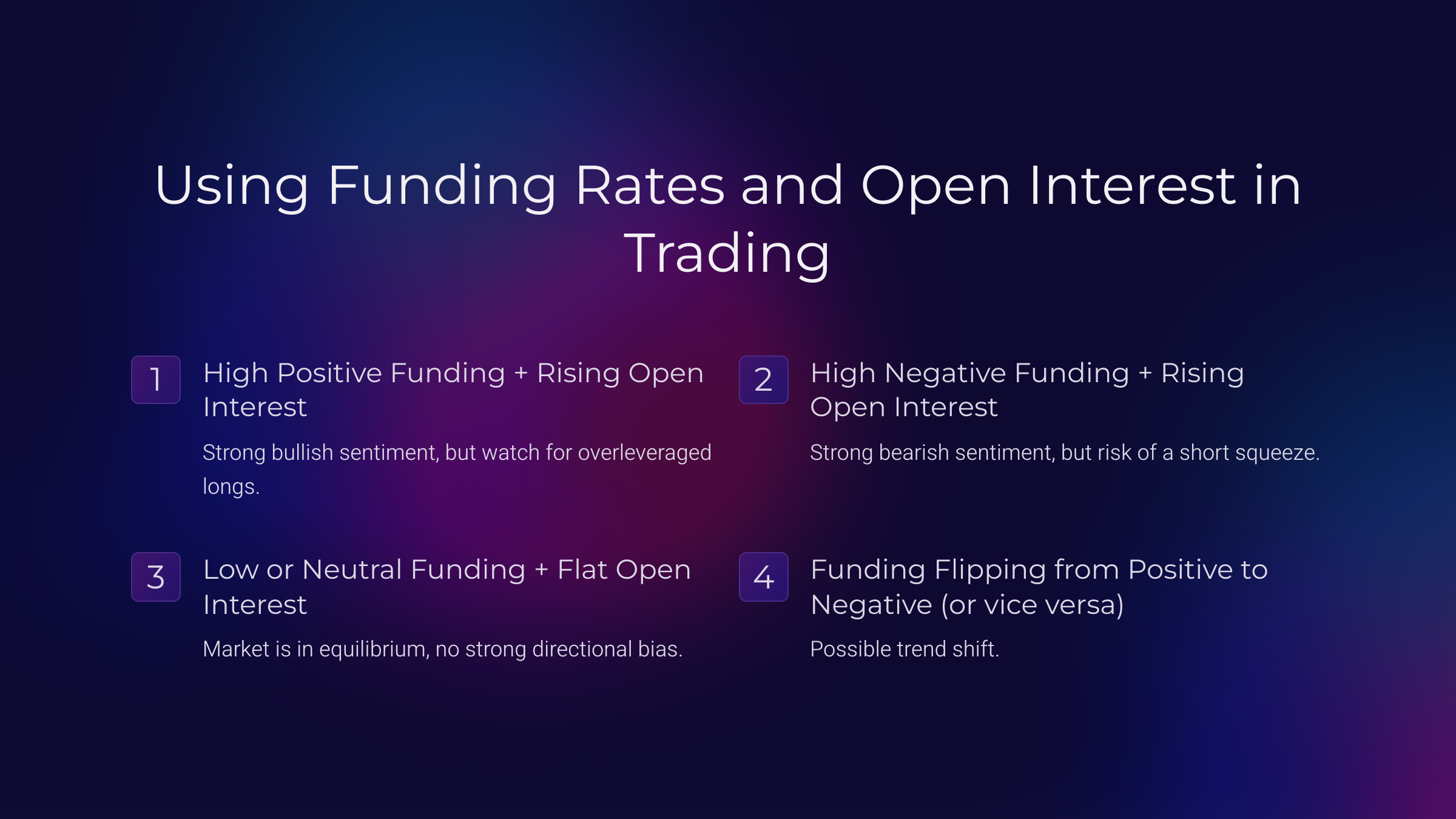
• High Positive Funding + Rising Open Interest → Strong bullish sentiment, but watch for overleveraged longs.
• High Negative Funding + Rising Open Interest → Strong bearish sentiment, but risk of a short squeeze.
• Low or Neutral Funding + Flat Open Interest → Market is in equilibrium, no strong directional bias.
• Funding Flipping from Positive to Negative (or vice versa) → Possible trend shift.
© Copyright Off The Chart 2025
Powered by Off The Chart
